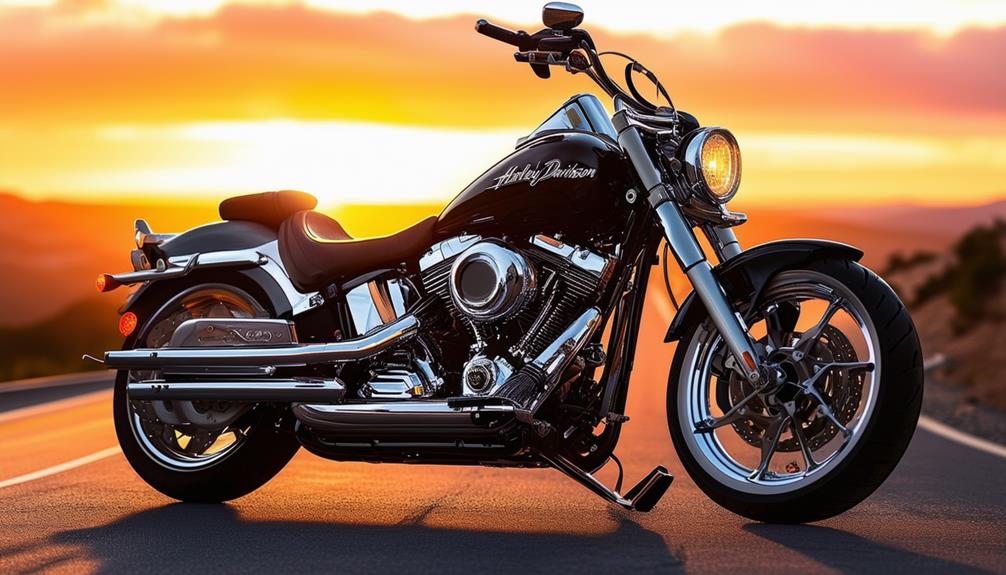Troubleshooting the charging system of a Harley-Davidson motorcycle can often seem daunting, but with the right approach and tools, you can overcome common issues that may arise.
The charging system of your Harley is pivotal to its operation; it ensures your battery remains charged and your bike’s electrical components function optimally. Familiarizing yourself with the system’s components such as the battery, stator, voltage rectifier/regulator, and connections can save you time and money.
Regular upkeep and an understanding of your bike’s charging system can prevent most problems before they begin. When issues do arise, having a service manual and a multimeter at hand are your first line of defense. These tools, coupled with a step-by-step approach to testing and inspecting the individual components of the charging system, allow for effective identification and resolution of electrical issues. Let’s dive in!
Key Takeaways
- Effective troubleshooting starts with a clear understanding of the charging system.
- Conduct regular maintenance to head off charging system issues before they escalate.
- Utilize a systematic approach for diagnosing and fixing specific electrical problems.
Understanding the Harley Charging System
When you ride your Harley, the charging system is the unsung hero keeping your motorcycle powered and ready. It converts mechanical energy into the electrical energy needed to run your bike and keep your battery charged. Let’s explore how this critical system works.
Components of the Charging System
Your Harley’s charging system consists of several key components that work together seamlessly. The alternator generates AC current, which is converted to DC current by the regulator/rectifier to charge the battery and power the motorcycle’s electrical systems. The alternator contains the stator and the rotor—the rotor spins inside the stator, which is lined with copper windings and magnets, to produce voltage.
Role of the Stator
The stator is a stationary coil of wires situated around the rotor. As the rotor, which is connected to the engine via the crankshaft, spins, it creates a magnetic field that induces AC (alternating current) in the stator. Your stator is critical as it’s the primary source of all the power your motorcycle’s electrical components use when the engine is running.
Function of the Regulator/Rectifier
Once AC current is induced by the stator, it’s the job of the regulator/rectifier to convert it to DC (direct current), which your Harley can use. The voltage regulator portion maintains the voltage to the battery within the optimal range, usually just over 12 volts, to avoid overcharging. The rectifier converts the AC into DC, making it suitable for your motorcycle’s electrical system and charging the battery.
Purpose of the Battery in the Charging Process
The battery in your Harley serves a crucial role—it stores electrical energy as DC current to be used when your motorcycle needs it, such as starting the engine or running lights when the engine is off. Proper battery voltage is vital; typically, a healthy battery should have a standing voltage between 12.5-13.2 volts. When the engine runs, this voltage should rise due to the charging system, typically falling in the range of 13.2-15 volts DC.
Preliminary Checks and Preparations
Before rolling up your sleeves to work on your Harley’s charging system, it’s essential to conduct preliminary checks and prepare properly. This will ensure a safe and efficient troubleshooting process.
Safety First: Preparing to Work on Your Harley
Your safety is paramount when performing any maintenance on your motorcycle. Always disconnect the battery before starting work to prevent any electrical shocks or shorts. Ensure your Harley Davidson is on stable ground and that you’re working in a well-ventilated area to avoid inhaling any potentially harmful fumes.
Tools and Equipment Needed
To effectively troubleshoot your charging system, you’ll need some key tools:
- A Service Manual: Refer to your Harley Davidson service manual for specific information on your model’s charging system, including specs and procedures.
- A Multimeter: An essential tool for measuring voltage, continuity, and resistance.
- Standard Toolkit: Includes screwdrivers, wrenches, and pliers.
Understanding Your Service Manual
Your service manual is your go-to guide for all components of your Harley. It details the specifications and troubleshooting steps for your motorcycle’s charging system, helping you identify where any issues may lie. Familiarize yourself with the manual to understand how the system works and the normal ranges for electrical readings.
Regular Maintenance to Prevent Issues
Regular maintenance of your Harley’s charging system is essential to keep it running smoothly and to prevent issues that could leave you stranded. By keeping up with a few simple tasks, you can ensure your motorcycle’s electrical system performs optimally.
Visual Inspection of the Charging System
Regularly inspect your charging system components for any signs of wear or damage. Look for:
- Cables and wires: Check for fraying, cracks, and any signs of stress or wear.
- Battery: Examine for any signs of leakage, swelling, or cracks.
Periodic Battery Maintenance
Your battery is the heart of your motorcycle’s electrical system. To maintain it:
- Check electrolyte levels: Make sure they are within the recommended range and top up with distilled water if necessary.
- Clean terminals: Remove any corrosion with a solution of baking soda and water or a battery cleaning product.
Ensuring Clean and Tight Electrical Connections
A solid electrical connection is vital for a reliable charging system. Therefore:
- Clean connections: Use a wire brush to clean off any corrosion or residue on the connectors.
- Tighten connections: Ensure all the connectors and grounds are secure and tight.
Taking these small steps regularly can save you from larger issues down the road and keep your motorcycle’s charging system in top shape.
Troubleshooting Steps
When your Harley’s engine won’t start or you’re facing electrical issues, a systematic approach to troubleshooting can save time and frustration. Arm yourself with a multimeter and let’s walk through the key diagnostics for your charging system, ensuring you cover all the bases from the battery to the wiring.
Diagnosing Starting and Electrical Issues
First, identify if the problem lies with starting the engine or an electrical issue. Gauge the initial state of charge in your battery. If your motorcycle won’t start at all, it could be a drained battery, problematic starter motor, or a deeper electrical system problem. Listen for any clicking sounds coming from the starter relay; this can indicate a low battery or a faulty relay.
Battery Voltage Tests
- Perform a Standing Voltage Test: Check your standing battery voltage using a multimeter set to DC volts; it should read between 12.5-13.2 volts. A lower reading indicates your battery may need charging.
- Conduct a Charging System Voltage Test: With the engine running, measure the voltage across the battery terminals. The reading should be about 13.2 to 15 volts, indicating the alternator’s output is properly charging the battery.
Stator and Rotor Tests
- Resistance Test: Disconnect the stator plug and measure the resistance between the leads with your multimeter set to the ohms scale to ensure there are no open or shorted coils.
- AC Output Test: Also, test the AC output from the stator; values should match the specifications in your service manual when the engine is running.
Regulator/Rectifier Diagnostics
- Voltage Test: The regulator/rectifier converts AC power from the alternator to DC to charge the battery and run your bike’s electronics. Check for correct output voltage to ensure it’s working correctly.
- Diode Test: Using your multimeter’s diode function, you can test the diode function inside the rectifier to ensure it’s only allowing current to flow in one direction as intended.
Checking the Wiring Harness and Connections
Inspect all connections and wiring for signs of damage, corrosion, or loose connections that could lead to a parasitic draw or other electrical problems. Ensure the grounds are clean and secure. A continuity test can aid in finding open circuits or breaks in the wiring. Remember, a well-maintained wiring harness is crucial for reliable electrical system performance.
Solving Specific Electrical Problems
When you encounter electrical problems with your Harley, knowing how to identify and fix specific issues is crucial for a smooth and reliable ride. Let’s tackle some common electrical problems you might face.
Addressing Frequent Battery Drain
If your battery repeatedly runs out of charge, it could be due to a fault in the charging system or an electrical accessory draining power. First, check the voltage regulator and stator output. Use a multimeter set to AC voltage and check the stator wires at higher RPMs; voltages typically around 18-20 AC volts per 1,000 RPM are expected. Low output could indicate a malfunctioning stator.
- Ensure your ignition switch and all electrical accessories are off when the bike is not in use.
- Examine the wiring harness for any signs of wear, corrosion, or damage, as these can cause parasitic drains.
Resolving Issues with Lights and Accessories
For problems with lights or accessories, ensure the charging system voltage is correct; 14.6 volts is a usual 12-volt system regulation point. If your turn signals or headlights are flickering or not working:
- Check for a blown fuse; replace it with the correct amperage if necessary.
- Inspect connections on switches and the electrical accessories themself, as loose or dirty connections can cause inconsistent operation.
Fixing Faults in Switches and Fuses
Faulty switches and fuses can lead to various electrical issues in your Harley.
- For switches, look for any signs of physical damage or corrosion. Test continuity with a multimeter to ensure they are operating as intended.
- With fuses, locate your motorcycle’s fuse box and inspect each fuse. A blown fuse will usually have a visible break in the metal filament inside the clear plastic.
Lastly, always refer to your motorcycle’s service manual for specific diagnostic procedures and electrical specifications. Proper maintenance and timely repairs can prevent many common electrical issues from escalating.
Advanced Diagnostic Techniques
When your Harley’s charging system shows signs of trouble, advanced diagnostic techniques using specialized tools and knowledge are your best bet for pinpointing and resolving the issues. The following subsections guide you through leveraging diagnostic trouble codes, interpreting multimeter readings, and testing for parasitic draw with precision and ease.
Utilizing Diagnostic Trouble Codes
Your Harley’s onboard diagnostic system generates Diagnostic Trouble Codes (DTCs) which are crucial for identifying issues. When a charging system fault occurs, such as with the security system or a faulty voltage regulator, the Check Engine Light (CEL) often illuminates. To retrieve these codes:
- Connect a diagnostic scan tool to your bike’s system.
- Note the codes displayed; refer to your service manual for specific code meanings.
Interpreting Multimeter Readings
A multimeter is essential for assessing the health of your charging system. To check the charging system’s output:
- Set your multimeter to the Voltage DC setting.
- Measure across the battery terminals; a healthy system should show between 13.2 and 15 volts DC when the engine is running.
If you suspect diode issues, switch your multimeter to the diode scale to check for continuity. Ensure there is no corrosion on any connections, as this can affect readings.
Testing for Parasitic Draw
Parasitic draw can drain your battery, even when your motorcycle is off. To test for this:
- With your multimeter set to the Current DC mode, disconnect your motorcycle’s negative battery cable.
- Connect the multimeter in series with the battery’s negative cable and negative post.
- A reading above 50 milliamps indicates a parasitic draw. You’ll need to check various circuits until the culprit is found.
Frequently Asked Questions
Navigating the electrical intricacies of your Harley-Davidson motorcycle can be challenging. Here, you’ll find answers to some common queries related to the charging system that will help you maintain a smooth ride.
How can I test the charging system on my Harley-Davidson motorcycle?
To test the charging system, start by checking the voltage across the battery with the engine off; it should be 12.5-13.2 volts DC. With the engine running, voltage should be approximately 13.2-15 volts DC. Also, disconnect the stator from the voltage regulator and measure the AC voltage across the stator wires at various RPMs.
What are the signs of a failing voltage regulator on my Harley?
Symptoms of a failing voltage regulator include dimming lights, strange instrument panel behavior, a dead battery, or an overcharged battery. Inspect your regulator for signs of burning or heat damage.
Where can I find the charging system wiring diagram for Harley-Davidson bikes?
Charging system wiring diagrams are typically found in the service manual for your specific Harley-Davidson model. These manuals can be purchased from a Harley-Davidson dealer or directly from their official website.








Leave a Reply
You must be logged in to post a comment.